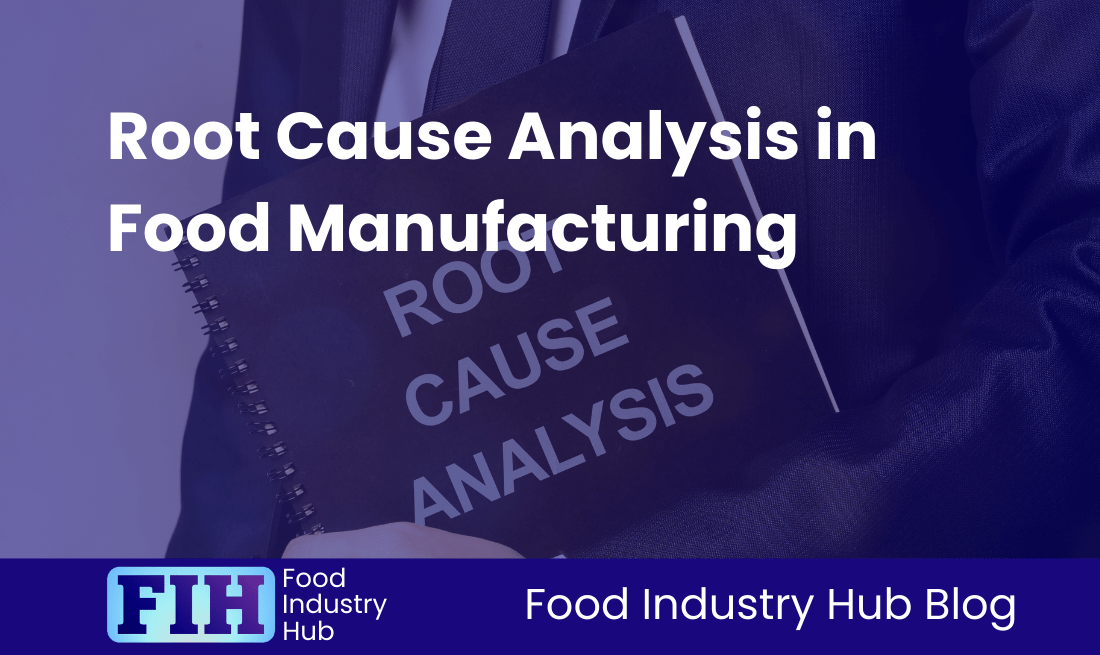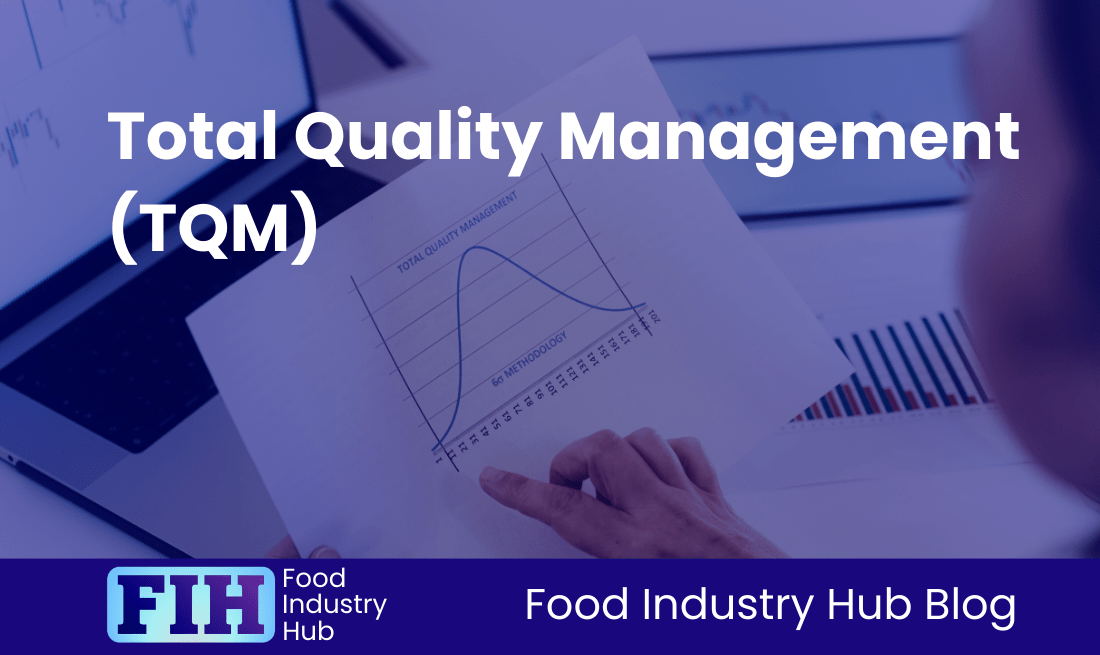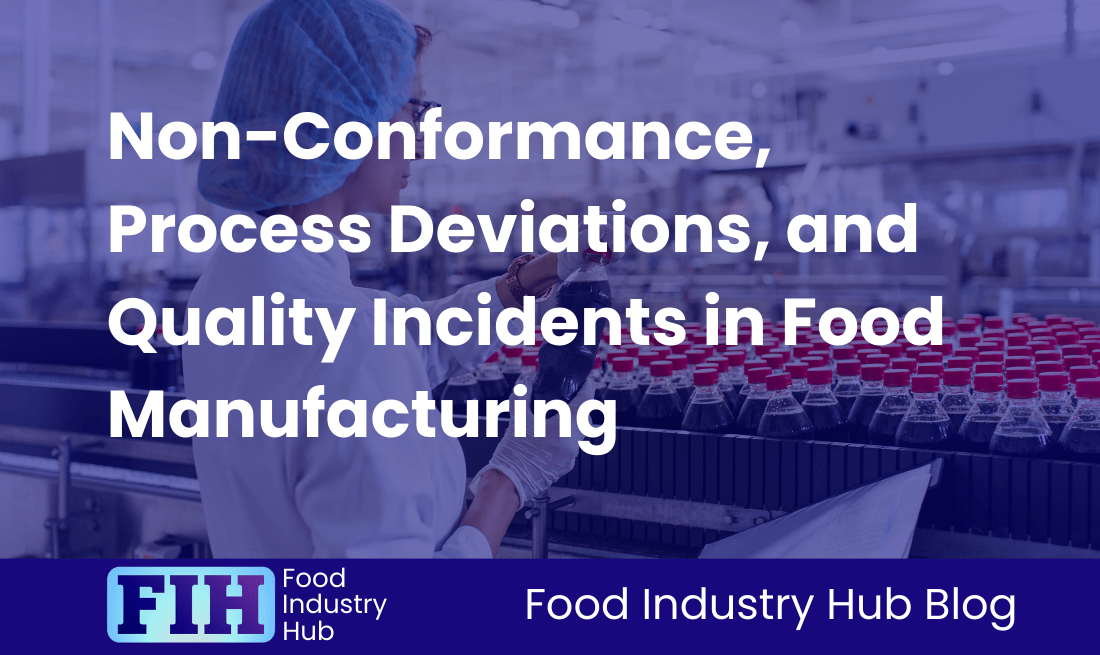Know: Six Sigma
Contents
Introduction
Key Takeaways
Foundational Principles of Six Sigma in Food Manufacturing
Adopting Six Sigma Tools and Methodologies
Maintaining Regulatory Compliance and Ensuring Food Safety
Waste Reduction and Efficiency Enhancement
Cultural and Organisational Impact of Six Sigma
Integration of Six Sigma with Existing Quality Systems
Value of Certification and Professional Development
Technological Integration and Upcoming Trends
Conclusion
Introduction
Six Sigma has asserted its importance in food manufacturing – overhauling processes to ensure safety, quality, and efficiency. It provides a highly effective system for improving product quality and operational performance, establishing itself as a key asset for food manufacturers aiming to reduce defects and enhance customer satisfaction.
Understanding Six Sigma
Six Sigma is a strategic approach to quality management that aspires to reach as near to perfection as possible, creating no more than 3.4 defects per million opportunities (DPMO). This methodology holds particular relevance to the food manufacturing industry with its focus on minimising variability and strengthening process reliability. It provides a structured path to continuous improvement, supporting businesses in upholding superior safety standards and ensuring regulatory compliance, and ultimately ensures products consistently meet quality benchmarks.
Impact of Six Sigma on Food Safety and Product Quality
The integration of Six Sigma in the food industry significantly influences both food safety and product quality. By employing tools such as statistical process control and failure mode and effects analysis (FMEA), Six Sigma methodologies help pinpoint and eradicate sources of contamination, drastically lowering the possibility of foodborne diseases, thereby ensuring company reputations remain positive. Similarly, practices like the design of experiments and process capability analysis facilitate alignment of products with client requirements, resulting in improved customer satisfaction and loyalty. Techniques including process mapping and value stream mapping are key in identifying and eliminating bottlenecks and waste, subsequently promoting operational effectiveness and driving down costs.
A Look at Major Themes
The major themes to be unfolded in this article include foundational principles, stressing on understanding the DMAIC (Define, Measure, Analyse, Improve, Control) framework and its practicality in the food industry. The content will explore Six Sigma tools and methodologies, analysing the employment of statistical process control and flowcharts, among others. Regulatory compliance will be touched on in terms of merging Six Sigma with pre-existing quality methods like HACCP (Hazard Analysis Critical Control Point) to ensure compliance with safety standards. The content will also detail the elevation of efficiency and curtailment of waste, featuring how process optimisation techniques can boost bottom-line outcomes. The effect of Six Sigma on organisational culture will be illuminated, underscoring the encouragement of a culture of continuous improvement and quality consciousness. Discussion will include the importance of Six Sigma certification for industry professionals, alongside forthcoming trends regarding the integration of technology, demonstrating how emerging technologies hold the potential to escalate Six Sigma implementation in food manufacturing.
Key Takeaways
Six Sigma has manifested as a cornerstone in the food manufacturing sector, acting fundamentally in reducing flaws and augmenting product quality consistency. By employing methodologies such as statistical process control and process capability analysis, organisations can effectively control their quality interventions. The continuous improvement focus nurtured by Six Sigma leads to progressive enhancements in product quality, which directly satisfies consumer demands.
Six Sigma Tools for Food Safety Challenges
Specific tools within Six Sigma, such as cause and effect diagrams and flowcharts, have demonstrated their ability to resolve food safety obstacles by precisely identifying the sources of contamination. These analytical tactics give companies the ability to navigate risks associated with foodborne illnesses, through the organised DMAIC method – comprising defining, measuring, analysing, improving, and controlling processes for consistent enhancements.
Regulatory Compliance and Food Safety Measures
Alongside upholding high-quality standards, Six Sigma facilitates regulatory compliance within food manufacturing by systematically identifying potential process weaknesses and establishing controls to minimise contamination. This alignment with standards such as HACCP and ISO 22000 ensures that companies consistently meet safety requirements, thereby safeguarding consumer health and brand reputation.
Operational Efficiency in Food Manufacturing Processes
Operational efficiency sees substantial improvement through the application of Lean Six Sigma principles, which prioritise waste reduction by eliminating unnecessary activities in production workflows. Techniques like Value Stream Mapping and Single-Minute Exchange of Die (SMED) significantly reduce setup times and elevate overall productivity, resulting in considerable cost savings.
Organisational Culture Focus and Growth
Six Sigma not only refines technical processes but also shapes an organisational culture centred around quality and continual advancement. By empowering employees, including those with various belt certifications, to own improvements, organisations can create an environment where everyone engages in the pursuit of excellence.
Integration of Six Sigma with Quality Management Systems
The assimilation of Six Sigma with prevailing quality management systems enhances their efficacy, offering a robust framework for relentless improvement. Certification programs, tailored specifically for food businesses, equip employees with practical tools and knowledge that stimulate operational improvements and enhance customer loyalty.
Food Industry Hub Management Systems can significantly boost the effectiveness of your food safety and quality management system, leading to improved confidence and elevated quality assurance throughout your operations.
Foundational Principles of Six Sigma in Food Manufacturing
Statistical Rigor in Defect Reduction
Six Sigma applies a robust statistical approach aimed at minimising variability and reducing defects in food manufacturing processes. Incorporation of tools like Statistical Process Control (SPC), Design of Experiments (DoE), and Failure Mode and Effects Analysis (FMEA) enables food manufacturers to systematically pinpoint and eliminate defect sources. This methodology assists in reducing defect rates to as low as 3.4 defects per million opportunities, a clear mark of Six Sigma excellence [Source: Six Sigma Daily].
The adoption of rigorous statistical techniques equips manufacturers for proactive defect management. Through the use of Pareto analysis and root cause analysis, defects can be located and corrective measures can be initiated effectively. In relation to food safety, microbiological testing allows manufacturers to incorporate statistical sampling strategies, aiding in the detection of pathogens and ensuring compliance to regulatory standards, including those set by the FDA and the FSMA [Source: Invensis Learning].
Adhering to Customer-Centric Quality Standards
In the food manufacturing industry, aligning production quality with customer expectations is key. Six Sigma’s customer-centric methodologies serve to boost brand loyalty and improve customer satisfaction by integrating consumer feedback into quality enhancement initiatives. The Voice of Customer (VOC) strategy proves useful for manufacturers to collect insight about customer preferences on important quality attributes like taste, texture, and packaging. Shifts towards allergen-free formations or eco-friendly packaging align production processes with real market demands, bolstering brand credibility and loyalty.
By setting clear quality benchmarks based on consumer insights, food manufacturers are able not only to meet, but to exceed expectations – facilitating stronger connections with their customers. This results in a consistent delivery of high-quality products that chime in with evolving consumer preferences, bolstering market competitiveness and securing long-term sustainability in the industry.
Process Optimisation from a Holistic Perspective
A thorough approach to process optimisation is essential for achieving high-quality outcomes in food manufacturing alongside efficient workflow management. Six Sigma promotes a detailed analysis of end-to-end processes, using techniques such as Value Stream Mapping (VSM) to identify inefficiencies and eliminate non-value-added activities throughout the production lifecycle. This approach considerably improves the quality of food products, as every stage—from raw material procurement to final delivery—is scrutinised for potential bottlenecks and waste.
The integration of Lean principles with Six Sigma facilitates efficient streamlining of operations for manufacturers. Systematic elimination of waste in processes, believed to account for 20-30% of operational costs, results in opportunities for resource optimisation while maintaining compliance with safety protocols and operational practices, such as Good Manufacturing Practices (GMP) and HACCP. This well-rounded vantage point promotes a culture of continuous improvement, ensuring adaptability and responsiveness of processes to shifting customer demands and regulatory environments, thereby enhancing product quality overall.
Adopting Six Sigma Tools and Methodologies
These tools and methodologies are central to enhancing standards across food safety and quality. Below, we focus on the DMAIC framework, Root Cause Analysis techniques, and the use of Statistical Process Control within the food industry.
The DMAIC Framework
The application of the DMAIC framework is key to Six Sigma strategies in tackling food safety issues, including contamination and fluctuating food quality. DMAIC, an acronym for Define, Measure, Analyze, Improve, and Control, lays out a structured plan for advancements in food manufacturing.
In the Define phase, teams identify concrete problems such as potential contamination risks or lack of consistency in product quality. For instance, by setting goals to decrease defects in packaged goods, businesses could see a substantial improvement that bolsters consumer trust[Source: GoLeanSixSigma].
The Measure phase involves gathering data on process metrics including contamination levels and product temperature. Here, tools like microbial assessments and temperature logs are employed to set a baseline for performance.
The Analyze stage uses statistical tools to trace defects back to their origins. For example, the use of Pareto charts can highlight that a minor percentage of items contribute the majority of waste, which pinpoints where interventions should be directed.
Centred on formulating targeted solutions to eliminate pinpointed root causes, the Improve phase might streamline cooking processes based on solid data, or standardise measurements for ingredient preparation to lower variability. The implementation of these improvements reduces defects in food by up to 70%[Source: Academic Journals].
Last but not least, the Control phase ensures that safeguards like automated temperature logs and updated standard operating procedures are established. This final step validates the sustainability of implemented improvements and regulatory compliance.
Implementation of Root Cause Analysis Techniques
To effectively handle operational inefficiencies and isolate sources of contamination, food manufacturers apply tools like the Fishbone Diagram and the 5 Whys method in Root Cause Analysis (RCA).
The Fishbone Diagram visualises and categorises potential causes of food quality issues across domains such as materials, machinery, methods, and personnel. It guides teams to methodically explore factors that might contribute to contamination or quality issues. For example, a Fishbone Diagram shed light on key factors like inadequate storage conditions and subpar inventory management practices in a case examining deteriorating raw material quality over its shelf life.
Complementing this, the 5 Whys technique encourages teams to persistently question until they uncover the root cause of a problem. For instance, if a food processor detects metal contaminants in a product, this method could trace the issue back to a worn conveyor belt, indicating the relevance of proactive maintenance.
Statistical Process Control (SPC) in the Food Industry
Statistical Process Control (SPC) is fundamentally important in the food industry. It offers continuous monitoring of key production parameters like temperature, pH, and microbial counts, ensuring process parameters are well controlled across all batches.
SPC techniques employ Control Charts to visualise and track these parameters throughout the production process. For instance, real-time monitoring of cooking temperatures made possible by control charts could trigger alerts and prompt immediate corrective actions when deviations occur.
Beyond temperature control, SPC also monitors acidity levels during processes like fermentation, helping to ensure that levels stay within safety margins and microbial growth is kept in check.
By integrating SPC techniques into the DMAIC Control phase, food manufacturers can spot deviations early, maintain regulatory compliance, and significantly reduce potential risks to food safety and consumer health.
Sign-up for the Food Industry Hub Mail Service
We regularly produce new content for food industry professionals, and the Food Industry Hub Mail Service is the best way to stay up to date with the latest additions.
Signup today to be added to the Food Industry Hub mailing list.
Maintaining Regulatory Compliance and Ensuring Food Safety
Standardisation of Safety Protocols
Six Sigma’s emphasis on process control and documentation aids in meeting regulatory compliance within the food sector in the UK and EU. By utilising a data-centric approach to standardisation, it ensures food manufacturers remain compliant with safety regulations from authorities such as the UK Food Standards Agency and the European Food Safety Authority. Robust process documentation ensures that every stage of production, starting from sourcing, is meticulously recorded — an important procedure in demonstrating compliance with standards such as HACCP (Hazard Analysis and Control Points) and ISO 22000. The statistical process control techniques infused in Six Sigma enable manufacturers to monitor control points and prevent deviations that could lead to compliance failures and hefty penalties.
The unfaltering implementation of Six Sigma instils a culture of quality within organisations, where proactive risk assessment is part of daily operations. Methodical standardisation ensures that employees are not just trained to follow the protocols, but they are also aware of non-compliance implications, leading to increased accountability and quality assurance across production lines.
Mitigating Risks of Contamination
Principles of Six Sigma play a significant role in reducing process variability — a prominent factor causing microbial contamination, specifically in temperature-sensitive food products. By employing techniques such as Statistical Process Control (SPC) and Failure Mode and Effects Analysis (FMEA), organisations can effectively monitor elements directly affecting food safety, including the storage and transport temperature control. The use of control charts assists in visualising process stability and identifying any straying from safety thresholds, thereby reducing the risk of contamination.
Performing root cause analysis using tools like cause-and-effect diagrams helps businesses pinpoint specific sources contributing to microbial growth. This approach enables the standardisation of handling procedures and storage conditions, addressing the fundamental causes of variability that might jeopardise product safety. Analysing historical data enables a food producer to identify which temperature deviations are linked with spoilage instances, enabling them to adjust their processes for consistent adherence to food safety standards.
Enhancing Traceability Systems
The DMAIC (Define, Measure, Analyse, Improve, Control) framework in Six Sigma plays a significant role in improving traceability systems within food manufacturing, aiding in more efficient recall processes should contamination occur. By instituting rigorous record-keeping practices, manufacturers can methodically document every product batch from ingredients to finished goods. This level of detail is necessary for quickly spotting the contamination source, thereby minimising health risks to consumers and limiting the financial impact of food recalls.
The ‘Analyse’ phase of DMAIC enables food businesses to scrutinise incident data to identify not only the impacted products during contamination events, but also to understand their origins. Comprehensive tracing is required for effective root cause analysis, allowing organisations to refine their processes continuously and reduce future contamination risks. Besides, implementing robust traceability systems bolsters consumer trust and assurance, as the ability to promptly identify and recall affected products is widely considered a reflection of a company’s commitment to quality and safety.
Waste Reduction and Efficiency Enhancement in Food Manufacturing Using Lean Six Sigma
Minimising Surplus Inventory
Preventing spoilage and reducing waste in the food manufacturing industry is closely tied to effective inventory management. Tools provided by Lean Six Sigma, most notably, the Kanban system, prove instrumental in aligning production with precise demand forecasts. The implementation of Kanban allows food manufacturers to considerably improve their demand forecasting, utilising visual indicators to replenish stocks based on live sales figures. This demand-led production approach helps reduce the surplus inventory and also cuts the risk of spoilage that comes with perishable goods. To illustrate, a bakery applying the Kanban system can adapt its ingredient orders and production schedules according to daily sales, thereby reducing any surplus raw materials or unsold finished products that would otherwise be discarded. Coupling Kanban with value stream mapping allows manufacturers to spot and tackle bottlenecks in their processes, thereby boosting overall inventory management and efficiency.
Energy Consumption Optimisation
In food manufacturing, energy consumption – especially during high-energy-demand processes like thermal processing and refrigeration – often contributes significantly to operational costs. The application of the DMAIC (Define, Measure, Analyse, Improve, Control) methodology lets manufacturers systematically pinpoint and address inefficiencies within these processes. In the Define phase, manufacturers specify which processes to focus on for energy reductions, such as ovens and refrigeration units. The Measure phase collects data on current energy usage patterns to establish a baseline. The Analyse phase deploys statistical tools to find the root causes of energy wastage, such as equipment inefficiencies or poor thermal insulation. Following this, the Improve phase sees manufacturers implement strategic upgrades or process changes like optimising machine settings or investing in energy-efficient technologies. Finally, the Control phase ensures these improvements are preserved through ongoing monitoring, resulting in a dramatic reduction in operational costs and a boost in environmental sustainability.
Reduction of Packaging Waste
In order to optimise packaging material usage in food manufacturing – reducing significant amounts of waste and enhancing safety and compliance – statistical analysis emerges as a highly effective tool. By using statistical process control (SPC) and Design of Experiments (DOE) techniques, manufacturers can make well-informed decisions to improve packaging processes. SPC allows continuous monitoring of packaging quality, ensuring efficient packing alongside minimal material use without compromising safety. Simultaneously, DOE helps manufacturers figure out the optimal specifications for packaging, such as material thickness or design configurations that preserve product integrity while reducing excess material use. That is, alterations can be made based on robust data to do away with over-packaging, addressing both economic and environmental issues. Thus, by adopting these methodological approaches, food manufacturers gain increased efficiency, cost savings and a more sustainable environmental footprint.
Cultural and Organisational Impact of Six Sigma
Enhancing Cross-Functional Collaboration
Six Sigma methodologies incite a sense of shared accountability within teams working in various departments of a food manufacturing organisation, such as quality assurance, production, and logistics. This harmonious integration is invaluable in addressing complex issues related to food safety and quality. Techniques like process mapping and Failure Mode and Effects Analysis (FMEA) are wielded to uncover potential weaknesses along the food supply chain, providing an avenue for all stakeholders to contribute towards problem resolution. Several studies argue that such a collaborative approach across departments paves the way for a resilient safety culture, whereby a communal sense of ownership significantly minimises contamination and additional safety risks.
Specifically, the Control phase within the DMAIC framework mandates ongoing surveillance by teams, reinforcing accountability and adherence to risk mitigation systems such as HACCP. The execution of Lean Six Sigma (LSS) fortifies interdepartmental synchrony and responsiveness, optimising operations in a manner that aligns with regulatory impositions. The active involvement of leaders in Six Sigma ventures can incite camaraderie, leading to substantial enhancements in performance within food manufacturing climates.
Promoting a Data-Driven Decision Culture
The shift towards a data-driven decision-making culture constitutes one of Six Sigma’s significant contributions to the food industry. By substituting gut-instinct judgements with data analysis, organisations can gain precise control over essential quality and safety parameters. Statistical tools, including Statistical Process Control (SPC) and Design of Experiments (DOE), support continuous monitoring of variables such as temperature and pH levels during production processes. This scrutiny enables prompt interferences to eliminate defects or contamination.
Adopting LSS leads to notable improvements in traceability and conformity with safety standards, as decisions are informed by reliable data instead of presumptions. Plus, the use of analysis tools like capability indices to assess performance metrics helps food manufacturers meet safety regulations effectively. These practices not only uplift operational resultants but also enhance the quality assurance process by illuminating a path for data-driven insights to flourish.
Embedding a Continuous Improvement Mindset
Six Sigma impregnates a continuous improvement mindset across all tiers of an organisation. The DMAIC (Define, Measure, Analyse, Improve, Control) framework empowers employees to detect and rectify inefficiencies in their daily functioning reliably. For example, techniques like value stream mapping enable teams to identify production line bottlenecks. This sites a focus on team members to eliminate non-productive activities. Through programmes like Six Sigma Green and Black Belt training, tailored for the food sector, employees acquire the necessary skills to effectively steer improvement initiatives.
Leadership commitment towards maintaining this progress plays a substantial role. As management advocates LSS principles, frontline staff feel more encouraged to participate in improving their activities. This communal pursuit of constant elevation, as shown within several food manufacturing organisations, reflects positively on operational efficiency and customer satisfaction. In the long run, Six Sigma nurtures an environment where ingenuity and quality fold into the fabric of the organisational ethos, thereby ensuring enduring success in the competitive food manufacturing industry.
Integration of Six Sigma with Existing Quality Systems
Strengthening of HACCP Frameworks
The integration of Six Sigma methodologies into the existing structure of Hazard Analysis and Critical Control Point (HACCP) frameworks presents a significant opportunity for enhancing hazard analysis within food manufacturing practices. By leveraging Six Sigma tools such as data-driven techniques – including Statistical Process Control (SPC) – and root cause analysis methods like cause-and-effect diagrams, precision in monitoring critical control points (CCPs) is significantly improved. The application of these Six Sigma tools allows food manufacturers to spot and eradicate variability sources, key to sustaining food safety standards. Such integration leads to efficient real-time monitoring and regulation essential parameters, such as temperature and pH levels, thus reinforcing risk reduction strategies relating to contamination during the production process. Six Sigma’s DMAIC (Define, Measure, Analyse, Improve, Control) framework extends a systematic method for handling potential contamination risks highlighted through HACCP analysis, which in turn, solidifies safety protocols and boosts food safety outcomes.
Upholding Compliance with ISO 22000 Standards
Embracing Six Sigma methodologies, with a particular emphasis on Failure Mode and Effects Analysis (FMEA), can aid in maintaining compliance with ISO 22000 standards. The FMEA process systematically identifies potential failure modes within the food processing lifecycle, evaluates their relative impacts, and prioritises corrective actions based on severity, incidence, and detectability. This proactive method is aligned with ISO 22000’s focus on exhaustive risk management throughout the food safety management system. Hence, utilising FMEA under the umbrella of Six Sigma empowers manufacturers to mitigate process variability, ensure consistent product safety, and accommodate regulatory requirements. This ultimately optimises operational processes and strengthens the elements of food quality and safety.
Reinforcing Good Manufacturing Practices (GMP)
Implementing Six Sigma principles can help reduce human errors often associated with Good Manufacturing Practices (GMP). Six Sigma places a robust emphasis on process standardisation and error-proofing strategies, like Poka-Yoke (mistake-proofing) techniques. The establishment of standardised workflows and rigorous training underpinned by data-driven approaches, enhances process reliability and consistency within food manufacturing environments. Alongside this, Six Sigma’s DMAIC framework pinpoints the root causes of errors usually tied to human factors and operational variability. Addressing these issues assures compliance with GMP and promotes a culture of safety and continuous improvement. Such improvements contribute to reducing product defects and augmenting operational control, ultimately protecting food quality and safety [Source: 6 Sigma US].
This comprehensive integration of Six Sigma methodologies with pre-existing quality systems such as HACCP, ISO 22000, and GMP allows food manufacturers to establish a robust framework that promotes food safety, ensures compliance, and enhances overall quality management. Consequently, it leads to improved product outcomes and mitigated operational risks.
Value of Certification and Professional Development
Leveraging Career Advancement Opportunities
Securing a Six Sigma certification provides a significant boost to career prospects in the food manufacturing sector. Certification serves as a testament to a professional’s expertise and dedication to ongoing improvement – key attributes for maintaining food quality and safety. Achieving certifications such as the Black Belt and Green Belt not only imparts vital leadership, project management, and statistical analysis skills, but also confirms the holder’s proficiency in using data-driven methodologies to improve food safety protocols and operational efficiency [Source: Six Sigma Online].
Facilitating Audit Preparedness
Certified Six Sigma professionals are instrumental in promoting audit readiness within their organisations by developing efficient pre-audit checklists. These checklists uphold rigorous food safety and hygiene standards, covering key components such as supplier quality, sanitation protocols, and traceability systems. By applying structured methodologies like DMAIC (Define, Measure, Analyse, Improve, Control), these professionals systematically identify and address risk areas, leading to timely corrective actions. This detailed process enables regulatory compliance, reduces the chances of penalties or recalls, and boosts overall operational efficiency – all of which are particularly important in the highly regulated food manufacturing sector.
Analysing the Return on Investment in Training
Investment in Six Sigma training can bring considerable benefits to food manufacturing organisations. Improvements in project success rates and swifter completion times result in significant productivity increases, leading to reduced costs and improved profitability. Research suggests that the adoption of Six Sigma methodologies reduces waste and enhances customer satisfaction, as certified professionals skillfully streamline processes and resolve functional bottlenecks. A solid organisational commitment to skill development not only cultivates employee engagement and retention but also strengthens the organization’s compliance stance, offering protection against potential losses from regulatory infractions. Thus, the Return on Investment (ROI) from Six Sigma training extends beyond tangible financial profit to nurturing an environment of continuous improvement, which is essential for thriving amidst the complexities of today’s food manufacturing sector.
Technological Integration and Upcoming Trends
In the context of Six Sigma for food manufacturing, technological innovations play a pivotal role in driving operational efficiency and enhancing food safety and quality.
AI-Driven Predictive Maintenance
Artificial intelligence (AI) holds the promise of transforming predictive maintenance strategies in the food manufacturing industry. By harnessing the power of Six Sigma’s data analysis potential, AI identifies impending equipment failures before they interrupt operations. The unique amalgamation of machine learning algorithms with Six Sigma’s DMAIC (Define, Measure, Analyse, Improve, Control) framework allows food manufacturers to gain predictive insights into equipment health, enabling them to undertake necessary maintenance actions in a timely manner. Such a proactive approach substantially minimises unforeseen downtime — a significant issue in food production where equipment malfunctions can result in contamination risks and revenue loss due to halted processes.
For example, AI can scrutinise historical performance data, detect wear patterns from sensors, and forecast imminent failures. Aligning maintenance schedules with production cycles based on these insights not only assists in ensuring operational continuity, but also makes a positive impact on product quality by minimising the risks associated with unpredictable equipment failure. Moreover, this incorporation aids in enhancing the overall equipment effectiveness (OEE) by reducing both downtime and variability in production processes, thus leading to improved product uniformity.
Role of IoT in Statistical Process Control (SPC)
The Internet of Things (IoT) holds increasing importance towards automating the collection of instantaneous data, which in turn is significant for effective Statistical Process Control (SPC) in food manufacturing. IoT devices, such as intelligent sensors deployed in production lines, consistently monitor important parameters — like temperature and humidity — which have direct implications on product quality and safety. By automatically collecting process data, human errors and inconsistencies in data recording are eliminated, thus enhancing the reliability of SPC measures integrated within Six Sigma initiatives.
The intersection of IoT with SPC methodologies enables real-time data analysis, which prompts immediate responses to process deviations. Such a rapid intervention capacity aligns well with Six Sigma’s objectives of defect minimisation, regulatory compliance, and upholding safety standards across food manufacturing operations. By harnessing IoT technology for SPC, food manufacturers can improve their competence in maintaining quality, responding to market demands effectively, and ultimately reducing waste, leading to improved consumer satisfaction.
Conclusion
The central principles and methodologies of Six Sigma, its core in the food manufacturing sector, are rooted in an exhaustive, data-informed strategy intended to minimise process irregularities and flaws, hence boosting product quality and safety. The use of statistical instruments allows for the precise pinpointing of root causes of quality deficiencies, promoting an atmosphere of sustained process enhancement within manufacturing settings. Organisations that implement Six Sigma methodologies aim to reduce defect rates to as low as 3.4 per million opportunities, meaningfully reducing episodes of non-adherence to standards and safety violations.
Six Sigma Tools and Methodologies
At the core of Six Sigma is the DMAIC framework—Define, Measure, Analyse, Improve, and Control—which provides food manufacturers with a structured problem-solving route. This methodology permits manufacturers to highlight major issues impacting product quality, measure significant process parameters, analyse data for actionable findings, and bring about improvements that retain prior advancements in quality.
Significance of Regulatory Compliance
Compliance with regulations in the food manufacturing sector gains significance, and Six Sigma supports manufacturers in adhering to rigorous food safety norms. With a focus on essential quality controls and throrough documentation practices, manufacturers can ensure they are always prepared for audits and aligned with regulations and assurance schemes such as those benchamrked by the GFSI. This proactive style not only fulfils compliance necessities but also forwards overall quality performance.
Efficiency Enhancement and Waste Reduction
When considering improvements in efficiency and reductions in waste, the amalgamation of Lean methodologies with Six Sigma (Lean Six Sigma) has proven transformative for food manufacturers. This approach reduces resource wastage and improves supply chain operations, resulting in substantial cost savings and enhanced delivery dependability.
Influence on Organisational Culture
A significant cultural shift brought about by Six Sigma is pertinent for instilling a mindset of continuous improvement across all levels of an organisation. Through varied training programmes, inclusive of Yellow, Green, and Black Belt certifications, employees are enabled to take ownership of quality initiatives. This empowerment encourages collaborative problem-solving that is decisive in maintaining high standards of food safety and product quality.
Impact on Existing Quality Systems
Incorporating Six Sigma with existing quality management systems can enhance operational effectiveness considerably. The statistical precision introduced by Six Sigma complements traditional practices, allowing for more accurate reviews of food safety controls. This integration fosters a comprehensive approach to quality assurance, backing ongoing compliance with regulatory frameworks and enhancing overall process efficiencies.
Importance of Certification and Professional Development
Certifications like the Yellow, Green, or Black Belt not only enhance personal skills but also set a tone of commitment towards quality within an organisation. These certifications are instrumental in enhancing the culture of quality conscious work ethics, which ultimately benefits the organisation’s product quality and safety standards.
Future Trends in Technological Incorporation
As we turn our look to the future, it is expected that the role of technology, in tandem with Six Sigma practices, will expand considerably. Innovations such as the Internet of Things (IoT) and artificial intelligence (AI) are slated to transform real-time quality monitoring and process control, dovetailing with Six Sigma’s data-driven foundation and advancing operational efficiencies. These emerging technologies are set to provide invaluable insights, enabling manufacturers to foretell potential quality issues before they occur.
Six Sigma represents a significant strategy for food manufacturers aiming to meet superior food safety and product quality standards. Its rigorous methodology, combined with the ability to incorporate technological advancements, underscores its transformative potential, positioning the industry for long-term success in an increasingly competitive global market.
About The Food Industry Hub Knowledge Centre
The Food Industry Hub knowledge centre delivers informative content on a variety of topics pertinent to the food manufacturing industry.
You can return to all topics by clicking here.
From The Food Industry Hub Blog
Expanding on this topic with related content from our blog.















